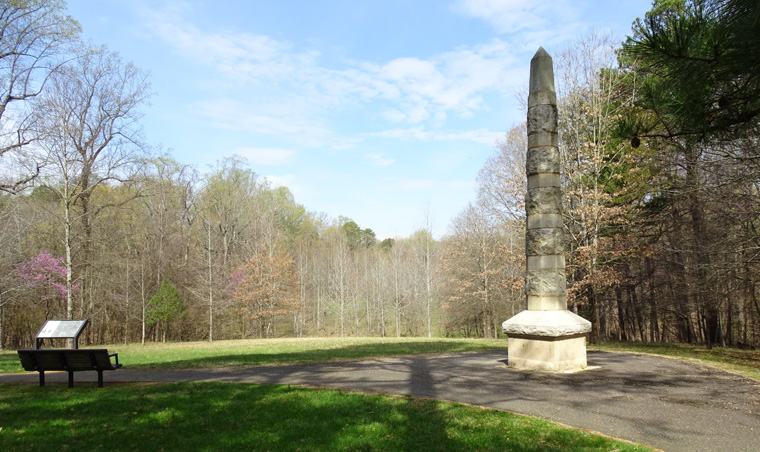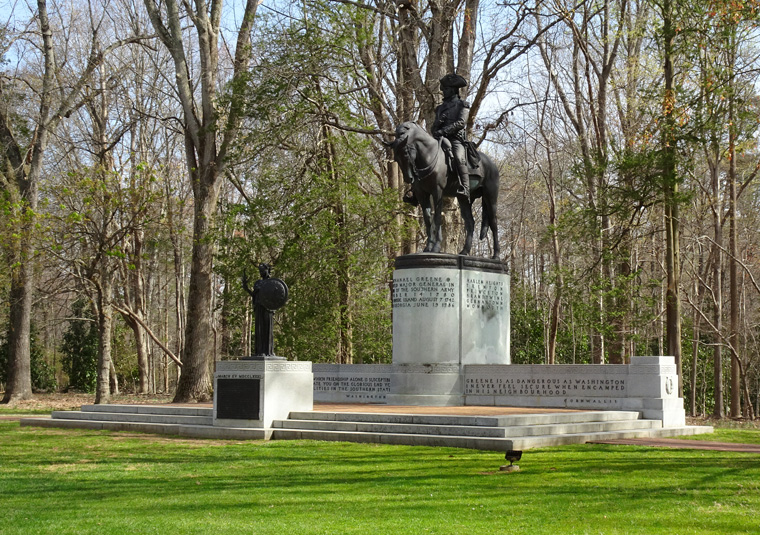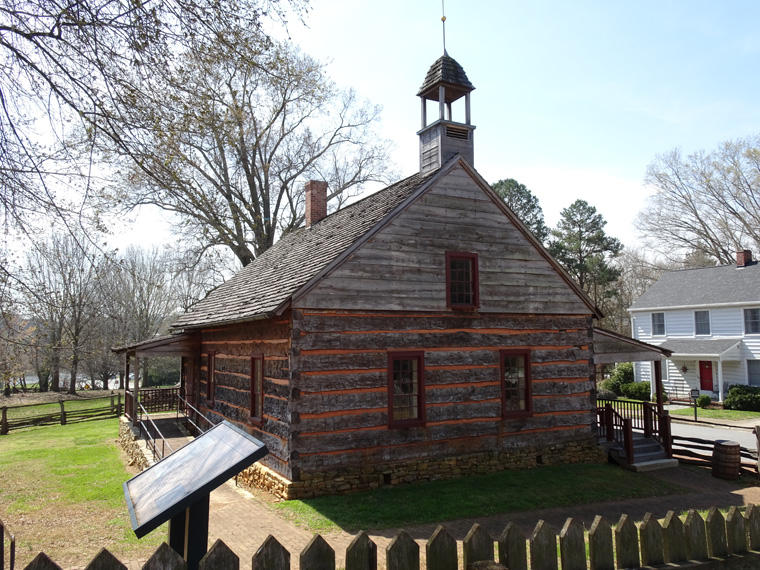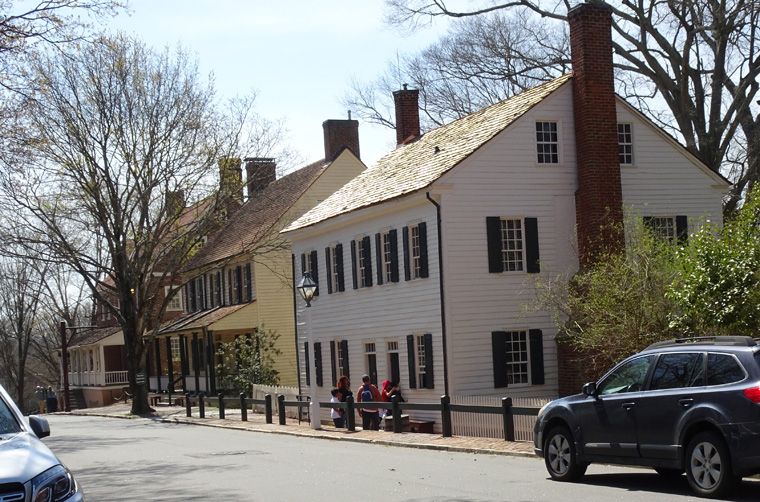Thursday March 23, 2023
On my previous visit to Greensboro I focused on the Civil Rights history (blogged here) but, after the rewarding experience visiting Yorktown, I decided to visit another revolutionary war battlefield, Guilford Courthouse National Military Park. In this battle Lt. Gen. Charles, Earl Cornwallis and a force of about 1,900 British Redcoats overcame an American force of some 5,000 American infantry led by Major General Nathanael Greene (who Greensboro is named after). The British attacked the American encampment at Guilford Courthouse in a bloody battle of guns and swords which left “dead and dying laying across over 1,000 acres of blood stained ground” and forced the Americans to retreat. Although it was a tactical win for the smaller British force their losses were more significant – about 25% – and they had to abandon North Carolina and head to the Virginia coast for supplies leading, eventually, to the loss at Yorktown some 7 months later.
I guess I should have realized that the Yorktown visit was so special because of the surrender of the British and the historical trophies of war that remain there. Unfortunately the tour of Guilford Courthouse was similar to civil war sites I have visited where you need to imagine the scenes based on drawings and descriptions on display boards mounted at each stop.


From Greensboro I drove to Winston Salem, NC to visit Old Salem Museums and Gardens. This is a living history area of restored and original buildings as they were in the early days of Salem which was founded as a Moravian Church community in 1753. The protestant church purchased 5 square miles (13 km2 ) of land and only allowed members to live there.
The church is very conservative, not permitting “frivolous” activities, such as dancing or gun play and not accepting any form of criminal behavior from members. Since acceptance of members was based on religious and character criteria this lead to an interesting relationship with the slavery practices of this state. Members were not permitted to enslave others but the church owned as many as 100 enslaved people and sold their labor to members if it was for an approved purpose. The community focused on crafts and skills that it could use to trade with other communities and the enslaved members were taught these skills and educated to read and write in Sunday School. However, they were not allowed to worship or live with whites (presumably because of state laws) and had to use a log church while white members used a brick church right next door.


As in Colonial Williamsburg costumed craftspeople demonstrate skills of the period, such as baking, weaving, gardening, shoe making etc. in the appropriate locations, 75% of these being original buildings. However, this is spring break in North Carolina and the place was awash with children on field trips so I was only able to look on from the back (or not get in at all) at these demonstrations. Nevertheless it was an interesting glimpse of life where religious beliefs and social norms were in conflict.

I then drove on to Spartanburg, South Carolina for the night.

I’m learning American history from you!
I’m learning the same stuff as I go. I hated history in school but enjoy learning it through travel.
I agree with Tina. I am learning more about American history, thanks to you.
We all benefit from continuous learning. I’m sure you learned a lot from your recent trip.